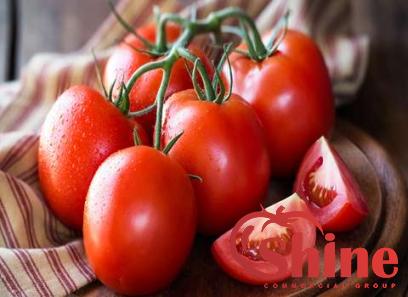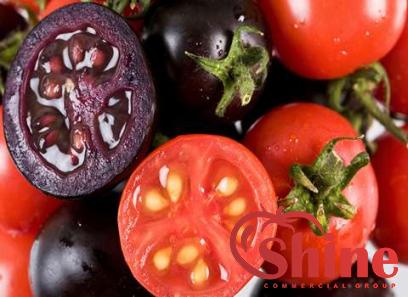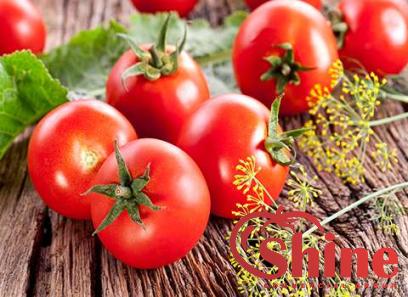It is obvious that tomato paste and water are considered the main ingredients used to make a variety of delicious sauce products. Tomato sauce is a common component that serves as the foundation for a variety of cuisines, most notably salsas and pasta dishes.
tomato paste delicious
In most cases, it is prepared by simmering tomatoes with various fragrant herbs and spices, followed by the reduction of the mixture until it attains a thick sauce. In order to break down the soft flesh of fresh tomatoes and concentrate the intense flavors, the tomatoes are cooked over a medium-low heat. In order to obtain the desired consistency, the skins of the tomatoes are occasionally removed, leaving behind only the pulp and flesh of the fruit. Homemade tomato sauce has the potential to be an additional healthy option. This tomato sauce is made from scratch, and as a result, it has a reduced sodium content, is cholesterol-free, and contains no trans fat. It is also low in carbohydrates and fat, making it an excellent choice for those following a variety of diets. Tomatoes are frequently mentioned as a source of vitamin C; however, they also contain a significant amount of potassium, which, when combined with vitamin C, can help create strong bones by boosting bone mineral density. In addition, it helps to avoid muscle cramps, lowers the chance of developing kidney stones, and brings blood pressure under control. Which Types of Tomatoes Produce the Finest Tomato Sauce, and Why?
- Tomatoes that have been recently picked up.
The fact that fresh tomatoes may be quickly broken down when heated is one of the most significant advantages of utilizing them to make sauces. However, in order to create the optimum flavor that is both vibrant and rich, you will need to combine the fresh tomatoes with tomato paste. You’re in luck if you can locate tomatoes that have firm flesh, very little juice, and very few seeds. These tomatoes are ideal. It is true that we are discussing paste tomatoes, often known as plum tomatoes; these are the meaty, substantial, and succulent Romas and San Marzano tomatoes. With this sauce recipe, we aimed to come up with a basic tomato sauce recipe that is suitable for every household, given the wide variety of gastronomic preferences and traditions that exist among them. Therefore, despite the fact that you are free to select any kind that strikes your fancy, we have maintained the integrity of the beginning pack by utilizing the standard red variety of tomatoes, which is readily available everywhere. 
tomato sauce recipe
Tomato sauce can be made from any of these kinds, regardless of their differences, and it will always be tasty and full of flavor. Don’t worry about selecting the perfect variety of tomato for the sauce; it will turn out well no matter which tomato you choose.
- Tomates en conserve
There are two considerations to take into account when deciding whether or not to utilize canned tomatoes for your sauce. The first advantage is that they are always perfectly ripe and succulent, and the second is that their convenience. When shopping for canned tomatoes, you have the option of purchasing either whole canned tomatoes or crushed canned tomatoes. Tomatoes in their whole form found in a can have almost the same consistency as fresh tomatoes but pack significantly more taste. Crushed tomatoes, on the other hand, are a touch lumpy and often blended with tomato puree. Tomatoes sold in cans are often picked from the best crops grown on farms, packed when they are at their peak of ripeness, and then preserved with various additives. This explains why they don’t easily become mushy and overripe, at least not before they get to your kitchen pantry where you keep them. It’s possible that you won’t even need to mix the canned tomatoes with tomato paste because they may already have added components that boost their flavor and make them suitable for immediate use. Always make sure to run taste tests to determine if there is anything else that needs to be added. Tomato Paste Versus Sauce The texture of tomato paste and tomato sauce are the primary characteristics that set them apart from one another. Tomato paste is the most concentrated form of tomato-based food products, while tomato purée and tomato sauce are both significantly watered down versions of the former.
- Tomato Sauce
Tomato sauce is made by simmering tomato purée in olive oil with an assortment of herbs and spices over a medium-low heat. By changing the amount of time that the food is cooked for, you may alter both the consistency and the acidity. Then, can you please explain what a tomato purée is? Simply fresh tomatoes that have been mashed up into a paste without any additional seasoning make up tomato purée. Tomatoes are de-seeded, then cooked, and finally processed in a food processor until they reach a smooth consistency. Tomato purée is frequently used as a flavor base in a variety of recipes, including casseroles, stews, soups, and even pasta and meat meals. You don’t have to waste any time cooking the tomato purée down into sauce before adding it to your recipes because you can just add it as is.
- Tomato Paste
If you let this sauce simmer for a sufficient amount of time, it will thicken up into a paste. This is the process that is used to make tomato paste. The tomato paste has a deeper, more scarlet hue, and its flavor is more concentrated. Because it is concentrated, it does not leave behind any extra liquid when it is added to recipes. 
tomato sauce substitute
Substitute for Tomato Sauce Tomato paste is generally the most suitable alternative to tomato sauce in most cooking situations. If this sauce is used as a mixing element, then you can substitute ketchup or tomato soup for it; nevertheless, you should be cautious of the other ingredients that are contained in such products. Because each is typically sweeter than conventional tomato sauce, you may need to combine them in the cooking process with other seasonings in order to achieve the taste profile you need. The preparation of this sauce using tomato paste is a straightforward process. Garlic and onion should be sautéed in olive oil or butter first, followed by the addition of tomato paste and water and continued cooking for 15 minutes. The tomato sauce is ready to be served as soon as all of the components have melted together and formed a purée. While the sauce is simmering, you may also flavor it with your favorite herbs and spices, such as oregano and basil, if you like. How to Make Tomato Sauce More Thick and Bold Different people have various conceptions of what constitutes the ideal consistency for a tomato sauce. Some people want it to be chunky, while others feel that a smooth, puréed gravy is more what they’re looking for in their lives. In most cases, condiments benefit most from being made from thin tomato sauces (on pizza for example). In a similar vein, recipes that call for the sauce to be cooked with other components over a high heat may benefit from using a more concentrated sauce (mostly casserole dishes). With this recipe, we wanted to achieve a tomato sauce that was both chunky and velvety to the touch. It is easy to prepare and may be incorporated into a wide variety of standard home-cooked meals. During the course of cooking, we learned the following pointers, which are applicable regardless of the texture. We sincerely hope that they will help you economize both time and effort! Be sure to cut the tomatoes into bits or mash them until they are smooth before you cook with them, regardless of whether you use fresh or whole peeled tomatoes. When they are pulsed more, the sauce will end up having a smoother consistency. If, on the other hand, you prefer your tomato purée with a lot of texture, you may simply skip this step. When left to simmer over the fire, the tomatoes will gradually break down on their own without any further intervention. It is necessary to pass the tomato sauce through a strainer after it has been cooked, even if the tomatoes have already been fully mashed. A completely smooth sauce can be achieved by straining the mixture using a mesh strainer, which also helps remove any undesired lumps from the mixture. The length of time the sauce is cooked for also affects its consistency, determining whether it will be runny or thick. The longer you allow it to simmer, the more it will reduce and become thick. If, on the other hand, you like a more watery sauce, we recommend continuing to simmer the sauce for at least 15 minutes (if not more). If you don’t give it enough time, the tastes won’t have a chance to meld together. 










Your comment submitted.